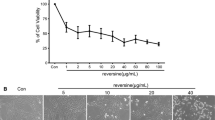Abstract
Cytoglobin, generated using genetic engineering method, is a kind of recombinant human stellate cell activation-associated protein. We speculate that it could influence the development of hepatic fibrosis like Sellate cell activation-associated protein which was discovered by Kawada et al. Therefore, we investigated its anti-fibrosis effect on liver both in vivo and in vitro. During our research, we found that cytoglobin showed obvious effect compared with the control group on Thioacetamide-induced liver fibrosis in SD rats, including significantly decrease in aspartate aminotransferase, Hyaluronic acid, laminin and collagen I(Col I) levels in serum and hydroxyproline in livers, which are the important indices reflecting the degree of hepatic fibrosis. Meanwhile, the viability of rat hepatic stellate cell line T6 (HSC-T6) cells was inhibited by cytoglobin and the apoptosis induced by cytoglobin in HSC-T6 cells was detected by Annexin V/PI double staining. Activation of the caspase cascade including caspase-3 for the intrinsic pathways was demonstrated. The results also showed that the expression of Bcl-2 protein decreased whereas that of Bax protein increased, leading to an increase of the Bax/Bcl-2 ratio. Our results demonstrated that cytoglobin exhibited anti-fibrosis activity on livers in vivo and in vitro, involving apoptosis induction.







Similar content being viewed by others
Abbreviations
- AST:
-
Aspartate aminotransferase
- Caspases:
-
cysteine aspartate-specific proteases
- Col I:
-
Collagen I
- ECM:
-
Extracellular matrix
- HA:
-
Hyaluronic acid
- hCyt:
-
Human cytoglobin
- HE:
-
Hematoxylin-eosin
- HPLC:
-
High performance liqid chromatography
- HSCs:
-
Hepatic sellate cells
- HSC-T6:
-
rat hepatic stellate cell line T6
- HYP:
-
Hydroxyproline
- LN:
-
Laminin
- MTT:
-
3-(4,5-dimethylthiazol-2-yl)-2,5- diphenytetrazoliumbromide
- PS:
-
Phosphatidylserine
- SD rat:
-
Sprague dawley rat
- STAP:
-
Sellate cell activation-associated protein
- TAA:
-
Thioacetamide
- TEM:
-
Transmission Electron Microscope
References
Adams JM, Cory S (2007) Oncogene 26:1324–1337
Asahina K, Kawada N, Kristensen DB, Nakatani K, Seki S, Shiokawa M, Tateno C, Obara M, Yoshizato K (2002) Biochim Biophys Acta 1577:471–475
Ashe PC, Berry MD (2003) Prog Neuropsychopharmacol Biol Psychiatry 27:199–214
D’Argenio G, Amoruso DC, Mazzone G, Vitaglione P, Romano A, Ribecco MT, D’Armiento MR, Mezza E, Morisco F, Fogliano V, Caporaso N (2010) Dig Liver Dis 40:571–577
De Martino L, Marfe G, Longo M, Fiorito F, Montagnaro S, Iovane V, Decaro N, Pagnini U (2009) Vet Microbiol 141:36–45
Fabris C, Smirne C, Toniutto P, Colletta C, Rapetti R, Minisini R, Falleti E, Pirisi M (2006) Clin Biochem 39:339–343
Fotakis G, Timbrell JA (2006) Toxicol Lett 160:171–177
George J, Tsutsumi M, Takase S (2004) Int J Biochem Cell Biol 36:307–319
Gomes AT, Bastos CG, Afonso CL, Medrado BF, Andrade ZA (2006) Clin Biochem 39:1160–1163
Gomez LA, Alekseev AE, Aleksandrova LA, Brady PA, Terzic A (1997) J Mol Cell Cardiol 29:1255–1266
Gong G, Qin Y, Huang W, Zhou S, Yang X, Li D (2009) Eur J Pharmacol 628:27–35
Gressner OA, Weiskirchen R, Gressner AM (2007) Clin Chim Acta 381:107–113
Grosse J, Grimm D, Westphal K, Ulbrich C, Moosbauer J, Pohl F, Koelbl O, Infanger M, Eilles C, Schoenberger J (2009) Nucl Med Biol 36:89–98
Gutierrez-Reyes G, Gutierrez-Ruiz MC, Kershenobich D (2007) Arch Med Res 38:644–651
Imanishi Y, Maeda N, Otogawa K, Seki S, Matsui H, Kawada N, Arakawa T (2004) J Hepatol 41:242–250
Jayaraj R, Gupta N, Rao PV (2009) Toxicology 256:118–127
Kawada N, Kristensen DB, Asahina K, Nakatani K, Minamiyama Y, Seki S, Yoshizato K (2001) J Biol Chem 276:25318–25323
Kuriyama S, Yamazaki M, Mitoro A, Tsujimoto T, Kikukawa M, Tsujinoue H, Nakatani T, Toyokawa Y, Yoshiji H, Fukui H (1999) Int J Cancer 80:471–476
Li GS, Jiang WL, Tian JW, Qu GW, Zhu HB, Fu FH (2009) Phytomedicine 17:282–288
Li HN, Nie FF, Liu W, Dai QS, Lu N, Qi Q, Li ZY, You QD, Guo QL (2009) Toxicology 257:80–85
Matsui H, Ikeda K, Nakajima Y, Horikawa S, Imanishi Y, Kawada N (2004) J Hepatol 40:917–925
Matsui H, Kawada N (2005) Eur J Pharmacol 509:31–36
Nagaraj NS, Anilakumar KR, Singh OV (2009) J Nutr Biochem 21:405–412
Okuyama H, Nakamura H, Shimahara Y, Uyama N, Kwon YW, Kawada N, Yamaoka Y, Yodoi J (2005) J Hepatol 42:117–123
Pennarun B, Meijer A, de Vries EG, Kleibeuker JH, Kruyt F, de Jong S (2009) Biochim Biophys Acta 1805:123–140
Pinzani M, Rombouts K (2004) Dig Liver Dis 36:231–242
Qiang L, Yang Y, Ma YJ, Chen FH, Zhang LB, Liu W, Qi Q, Lu N, Tao L, Wang XT, You QD, Guo QL (2009) Cancer Lett 279:13–21
Stefanovic L, Stephens CE, Boykin D, Stefanovic B (2005) Life Sci 76:2011–2026
Wang J, Zhao XZ, Qi Q, Tao L, Zhao Q, Mu R, Gu HY, Wang M, Feng X, Guo QL (2009) Food Chem Toxicol 47:1716–1721
Wang P, Liang YZ (2010) Fitoterapia 81:793–798
Xu D, Wu Y, Liao ZX, Wang H (2007) Pharmacol Res 55:280–286
Zeng S, Liu W, Nie FF, Zhao Q, Rong JJ, Wang J, Tao L, Qi Q, Lu N, Li ZY, Guo QL (2009) Biochem Biophys Res Commun 385:551–556
Acknowledgments
The authors thank Professor Qinlong Guo and Lei Tao for assistance.
Conflict of Interest
The authors declare that there are no conflicts of interest.
Author information
Authors and Affiliations
Corresponding author
Additional information
Xin He and Ruoyun Lv contributed equally to this work.
Rights and permissions
About this article
Cite this article
He, X., Lv, R., Wang, K. et al. Cytoglobin Exhibits Anti-Fibrosis Activity on Liver In Vivo and In Vitro. Protein J 30, 437–446 (2011). https://doi.org/10.1007/s10930-011-9340-2
Published:
Issue Date:
DOI: https://doi.org/10.1007/s10930-011-9340-2




